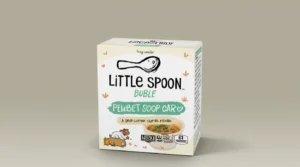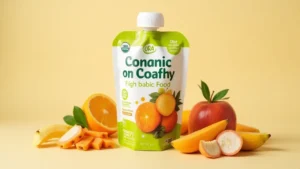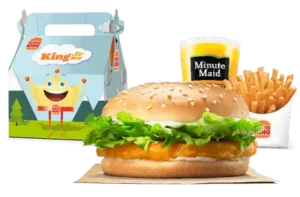Table of Contents
Introduction
Selecting the perfect baby food containers is more than just a matter of aesthetics—it’s a critical decision that impacts your little one’s nutrition, safety, and your day-to-day efficiency. With busy schedules and growing families, having reliable storage solutions ensures that every meal is fresh, organized, and ready when hunger strikes. In this comprehensive guide, you’ll learn everything from materials and designs to cleaning hacks and smart storage, empowering you to make informed choices that last for years.
Why Quality Matters
Modern parents demand convenience without compromising safety. The rise of DIY baby food prep has made baby food containers an indispensable tool. Here’s why investing in premium containers pays off:
- Preservation of Nutrients: Airtight seals and freeze-friendly materials lock in vitamins and minerals.
- Safety First: BPA-free, phthalate-free plastics or tempered glass eliminate harmful chemical exposure.
- Ease of Use: Stackable designs and microwave-safe components streamline meal prep.
- Longevity: Durable options reduce waste and save money over time.
Comparison of Common Materials
| Material | Pros | Cons | Best Use Case |
|---|---|---|---|
| BPA-free Plastic | Lightweight, budget-friendly, flexible lids | Scratches over time, slight odor risk | On-the-go snacks, daytime school use |
| Glass | 100% inert, stain-resistant, dishwasher-safe | Heavier, can break if dropped | Freezer storage, reheating meals |
| Silicone | Collapsible, freeze- and microwave-safe, durable | Pricier, limited color options | Purees, portion control, travel |
| Stainless Steel | Ultra-durable, sleek, eco-friendly | Not microwave-safe, can dent | Hot soups, long-term storage |
Key Features to Look For
When selecting baby food containers, consider these must-have features:
- Airtight Seals: Prevent freezer burn and leaks in diaper bags.
- Modular Design: Stackable or nesting styles maximize fridge and pantry space.
- Measurement Marks: Built-in graduations save time and reduce dishes.
- Leak-Proof Lids: Essential for transporting purees, yogurts, and stews.
- Dishwasher & Microwave Safe: Simplify cleanup and reheating.
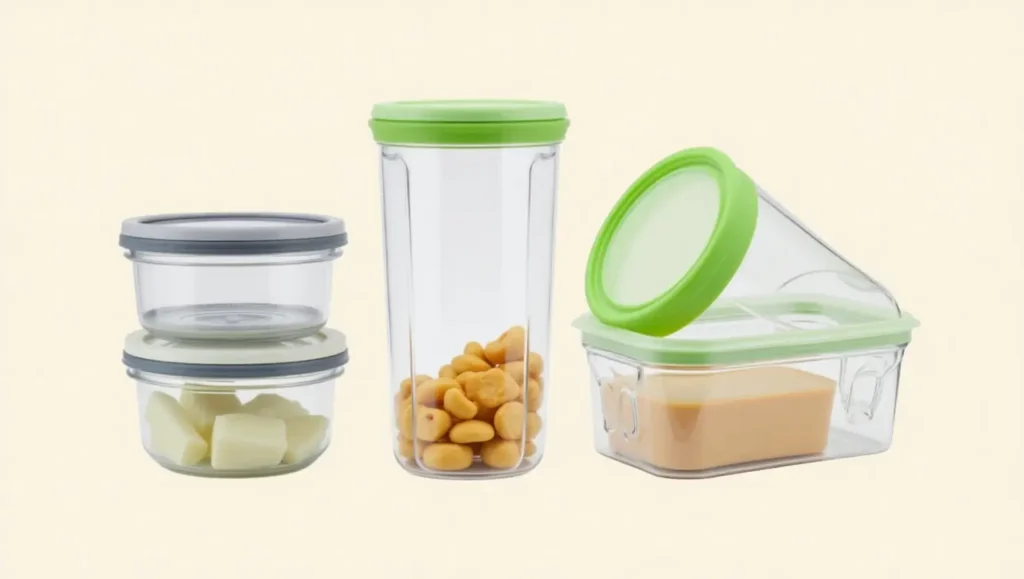
Types of Containers
1. Portion-Control Pods
Ideal for busy mornings, these small, single-serve pods often snap apart for easy thawing. Compatible with popular appliances like the Baby Brezza Food Maker, they streamline batch prep and feeding.
2. Compartment Bento Boxes
Great for toddlers starting solids, these boxes separate fruits, veggies, and protein. Many come with adjustable dividers, ensuring optimal portion sizes.
3. Silicone Pouches
Soft-sided, squeeze-friendly pouches let little hands self-feed purees. Look for wide openings for easy filling and cleaning.
4. Glass Jars & Trays
Prudent cooks love tempered glass trays with lids that double as oven-safe dishes. Perfect for cooking, freezing, and reheating in one vessel.
Top 5 Recommended Container Sets
| Set Name | Material | Capacity per Unit | Pieces Included | Price Range |
|---|---|---|---|---|
| PurePrep Modular Kit | BPA-free Plastic | 4 oz | 18 | $25–$30 |
| GlassEase Freezer Trays | Glass | 3 oz | 12 | $35–$40 |
| FlexiPouch Silicone Pouches | Silicone | 6 oz | 10 | $20–$25 |
| BentoBaby Compartments | Plastic/SS | 5 oz | 6 | $30–$35 |
| SteelSeal Hot Food Set | Stainless Steel | 8 oz | 4 | $40–$45 |
Integrating with Baby Food Makers
To maximize efficiency, pair your containers with dedicated appliances:
- Automated Blenders & Steamers: Connect jars directly to devices like the Baby Food Maker for seamless steaming, blending, and portioning.
- Smart Timers & Apps: Some makers sync with mobile apps to notify you when purees are ready and can automatically dispense into linked containers.
Buying Guide: What to Prioritize
Your choice of baby food containers should prioritize:
- Safety Certifications: Look for FDA approval, BPA-free labeling, and conformity to EU food-contact regulations.
- Size Versatility: From 2 oz sample cups to 8 oz meal portions—choose sets that adapt as your child grows.
- Ease of Cleaning: Dishwasher-safe lids and dishwasher racks compatible bodies cut down on chores.
- Portability: Leak-proof seals and protective cases for travel or daycare drop-offs.
- Budget vs. Longevity: While glass options carry a higher upfront cost, they often outlast plastics by years.
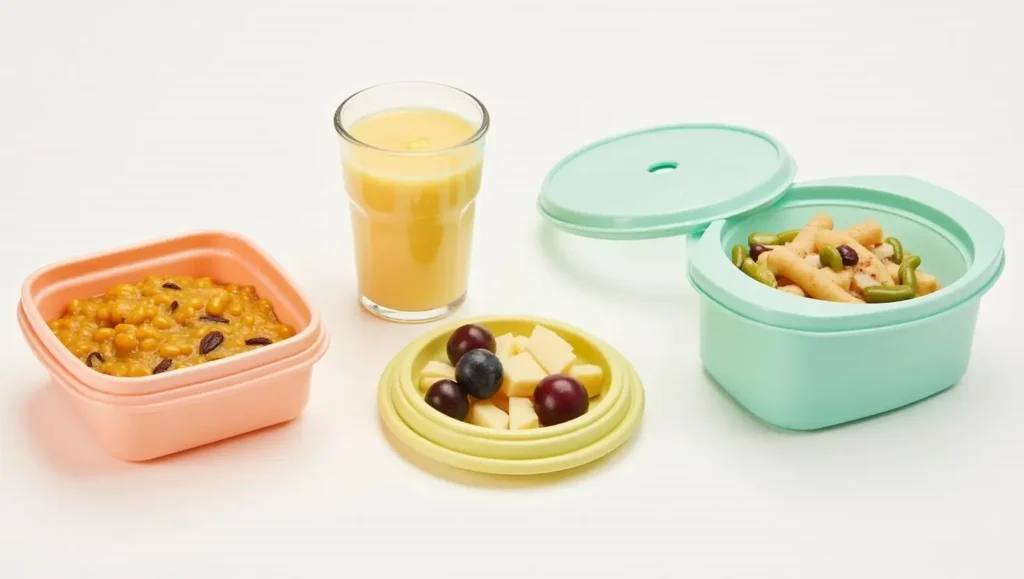
Cleaning & Maintenance Tips
- Daily Rinse: Prevent staining by rinsing containers immediately after use.
- Vinegar Soak: For stubborn odors, soak plastic seals in a 1:1 vinegar-water mix for 30 minutes.
- Deep Clean: Once weekly, disassemble all parts—gaskets, seals, lids—and run through the top rack of the dishwasher on a hot cycle.
- Inspect Seals: Replace silicone rings or gaskets every 6 months to maintain airtight performance.
Smart Storage Hacks
Properly organized baby food containers can save precious refrigerator and pantry real estate:
- Label & Date: Use waterproof markers or pre-printed labels to track prep dates.
- Vertical Freezing: Store small containers upright in freezer bins to maximize airflow and visibility.
- Magnetic Racks: Attach metal lids to the inside of freezer doors to free up shelving.
Eco-Friendly Considerations
- Reusable Options: Opt for silicone or glass over single-use plastics.
- Bulk Buying: Purchase larger trays and use portioned inserts rather than many small containers.
- Recycling Programs: Some brands offer take-back schemes for worn-out containers.
Troubleshooting Common Issues
| Problem | Possible Cause | Solution |
|---|---|---|
| Lid doesn’t seal | Misaligned gasket or warped rim | Re-seat gasket; hand-wash rim |
| Frost buildup in freezer | Frequent door openings | Group items; limit thaw cycles |
| Plastic staining | Tomato- or carrot-based purees | Pre-soak in baking soda paste |
| Lingering odors | Bacterial residue in seals | Vinegar soak; replace silicone rings |
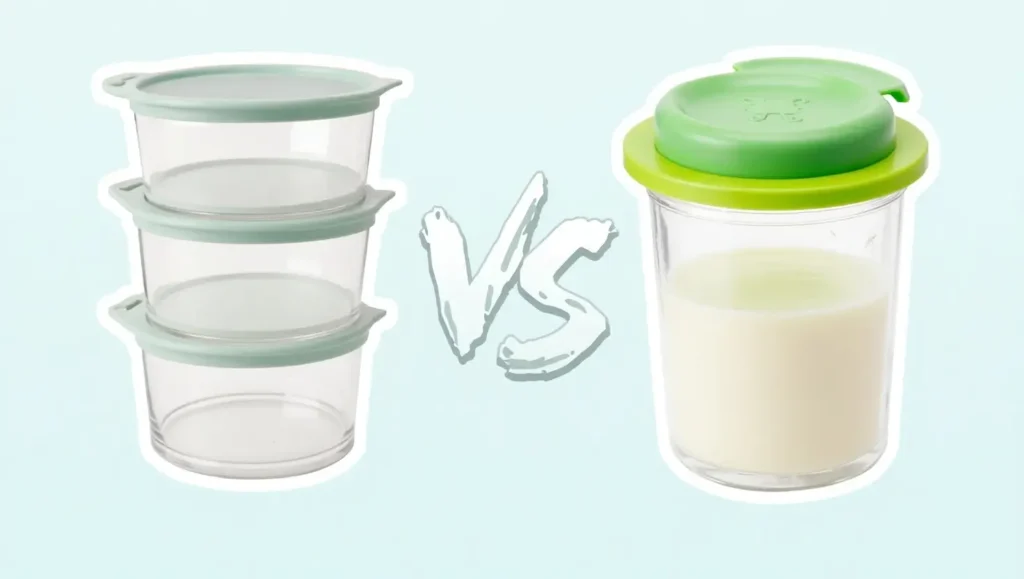
Where to Use Baby Food Containers
You can make the most out of baby food containers in these scenarios:
- Meal Prepping in Batches: Make a week’s worth of puree in minutes with appliances like the Baby Brezza Food Maker.
- On-the-Go Feeding: Leak-proof containers make daycare, outings, and travel meals mess-free.
- Freezing & Thawing: Use freezer-friendly glass or silicone trays that thaw evenly in the microwave.
- Introducing New Foods: Small 2 oz containers are perfect for testing allergens or new flavors.
Final Thoughts
Choosing the right baby food containers is a game-changer in your parenting journey. Whether you’re blending meals with your Baby Food Maker or prepping ahead for the week, quality storage ensures you keep your baby nourished, safe, and happy. From selecting the right material to organizing your freezer like a pro, this guide gives you everything needed to make confident, informed decisions.

